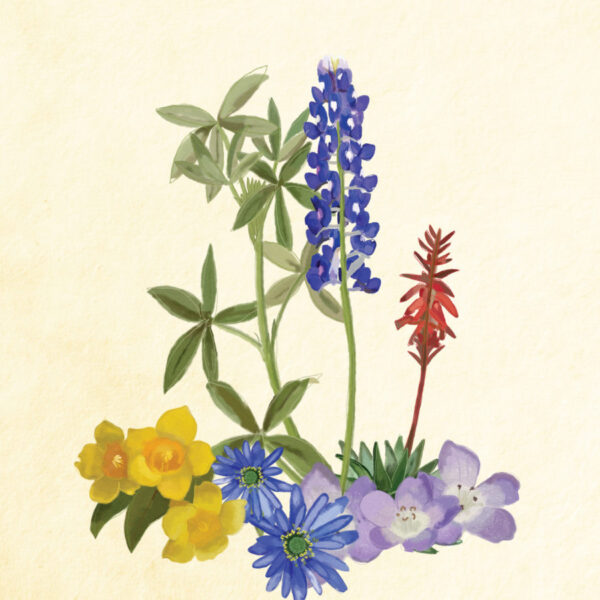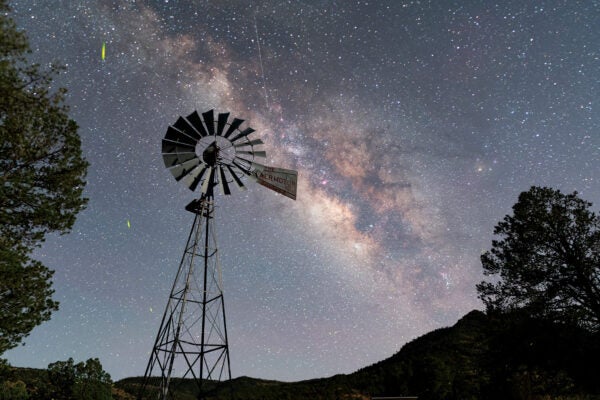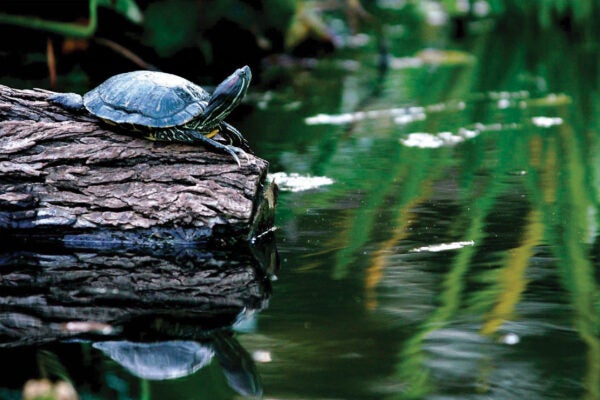The Lady Bird Johnson Wildflower Center lies just beyond Austin’s downtown traffic, near the intersection of MoPac and State Highway 45. Tucked within Southwest Austin’s rolling hills, the Wildflower Center is an ode to the natural world that encourages visitors to revel in the magic of Texas’ native landscape.
Upon entering the grounds, it is clear that Lady Bird Johnson realized her vision of celebrating and inspiring the conservation of Texas’ native plants.
Visitors are welcomed with an inscription of the former first lady’s words: “My special cause, the one that alerts my interest and quickens the pace of my life, is to preserve the wildflowers and native plants that define the regions of our land — to encourage and promote their use in appropriate areas, and thus help pass on to generations in waiting the quiet joys and satisfactions I have known since my childhood.”
Maintaining Lady Bird Johnson’s promise to protect Texas wildflowers is important to Patrick Newman, executive director at the Wildflower Center. “Mrs. Johnson understood, perhaps more so than many of her contemporaries, that the environment and native ecosystems have the ability to reach people at a deep level,” Newman says. “That still permeates the organization today.”
Lady Bird Johnson and actress Helen Hayes founded the Wildflower Center in 1982 as the National Wildflower Research Center. In 1997, the center was renamed the Lady Bird Johnson Wildflower Center. Two years prior to this renaming, the facility was relocated from East Austin to the cusp of the Hill Country.
Winding aqueducts, enduring oak trees and flowing fountains greet guests in the entrance garden. Spanning 284 acres, the Wildflower Center is home to more than 800 diverse species of native plants from across Texas. It is also home to Athena, a great horned owl often found nestled in the courtyard.
The facility is open seven days a week and entrance is free for staffers, faculty members and students from The University of Texas at Austin. The Wildflower Center also hosts several unique programs that are fitting for both adults and children.
Many adult programs involve learning how to incorporate native Texas plants into home gardens and landscapes. Guided garden tours are available several days a week, and the Native Plant Gardening Series offers a variety of classes. Those new to gardening can learn plant care best practices, and more advanced students can learn pest management and foraging techniques.
Families can enjoy activities at the Wildflower Center throughout the seasons. The “Nature Nights” series allows children to explore the native plants and ecology of Central Texas. Activities ranging from investigating caves to hiking trails attract kids of all ages. With “Movies In The Wild,” a partnership with Alamo Drafthouse, the Wildflower Center screens popular films on an inflatable screen in the Family Garden. There is also “Fortlandia,” an interactive series in which artists reimagine forts from childhood.
But the programs at the Wildflower Center do not outcompete the natural beauty of the grounds. The Savanna Meadow Trail is one of Newman’s favorite locations.
“It’s one of the most magical places,” he says. “It changes and evolves through the season. When the spring bloom comes in, bluebonnets and Indian paintbrush show through. Then (they) give way to Texas star and Indian blanket. I love that about that space — it’s never stagnant. There is a deep message in that, I feel.”
I HOPE ALL GUESTS TAKE AWAY EMOTIONAL SOUVENIRS.
The meadow is more than a beautiful site: Water flowing through the Savanna Meadow filters into the Edwards Aquifer, one of the main sources of water in Central Texas. Water conservation is a key tenet at the Wildflower Center.
When the Wildflower Center was first built, it was one of the largest rainwater collection facilities in the nation. The Observation Tower, while giving visitors an unobstructed view of the countryside, also functions as a cistern that holds up to 10,000 gallons of water. To this day, using rainwater and an on-site well, the center waters all plants on the property without using city irrigation.
Sustainability at the Wildflower Center doesn’t stop at water conservation. Many of the buildings feature sustainable features, including solar panel roofs, repurposed denim insulation, renewable cork floors and formaldehyde-free plywood.
Just as staff members at the Wildflower Center hope to inspire the public to incorporate more native plants into their home gardens, they want visitors to consider how to lead more sustainable and less water-dependent lives.
“When you consider that a lot of Austin is on the aquifer and a lot of Austin drains into the rivers, that is really something we should be thinking about,” Newman says. “If each of us reduces, just a little bit, how much water, pesticides and nitrogen fertilizer we use, collectively we’ve done well.”
More than anything, Newman says he hopes that staff and faculty members who visit the Wildflower Center have emotional responses to their experience at the facility.
“I hope all guests take away emotional souvenirs,” he says. “What I mean by that is something that inspires them to take action and to change. It might be that they visit the Wildflower Center and they’re inspired to be a little calmer or a little less hurried. It might be that they visit the Wildflower Center and are inspired to start a garden.”
The term “back forty” refers to a portion of the farm that often goes unvisited. In Texas Connect, the recurring Back 40 section showcases hidden gems on campus. Have a suggestion? Email pitch@texasconnect.utexas.edu.



